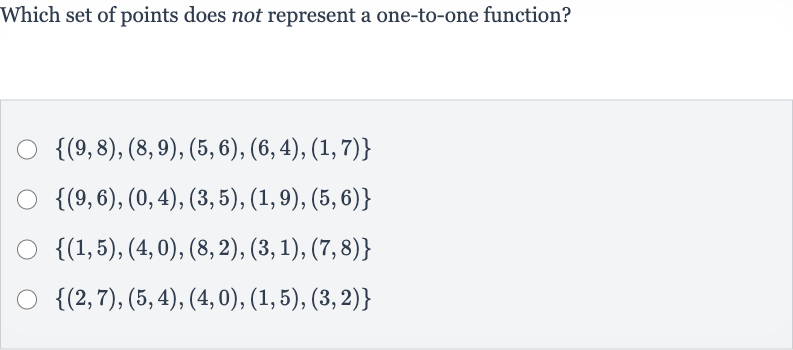Full solution
Q. Which set of points does not represent a one-to-one function?
- Function Definition: A one-to-one function, also known as an injective function, is a function where each -value is paired with exactly one unique -value, and no -value is repeated. To determine which set of points does not represent a one-to-one function, we need to check if any -value is repeated for different -values in each set.
- Check First Set: Check the first set of points: . We see that all -values are unique for different -values. Therefore, this set represents a one-to-one function.
- Check Second Set: Check the second set of points: . We see that the -value is repeated for -values and . Therefore, this set does not represent a one-to-one function.
- Conclusion: Since we have already found a set that does not represent a one-to-one function, we can conclude the problem. However, for completeness, let's check the remaining sets.
- Check Third Set: Check the third set of points: . We see that all -values are unique for different -values. Therefore, this set represents a one-to-one function.
- Check Fourth Set: Check the fourth set of points: . We see that all -values are unique for different -values. Therefore, this set represents a one-to-one function.
More problems from Write a quadratic function from its x-intercepts and another point
QuestionGet tutor help
QuestionGet tutor help
QuestionGet tutor help
QuestionGet tutor help
QuestionGet tutor help
QuestionGet tutor help
QuestionGet tutor help
QuestionGet tutor help

